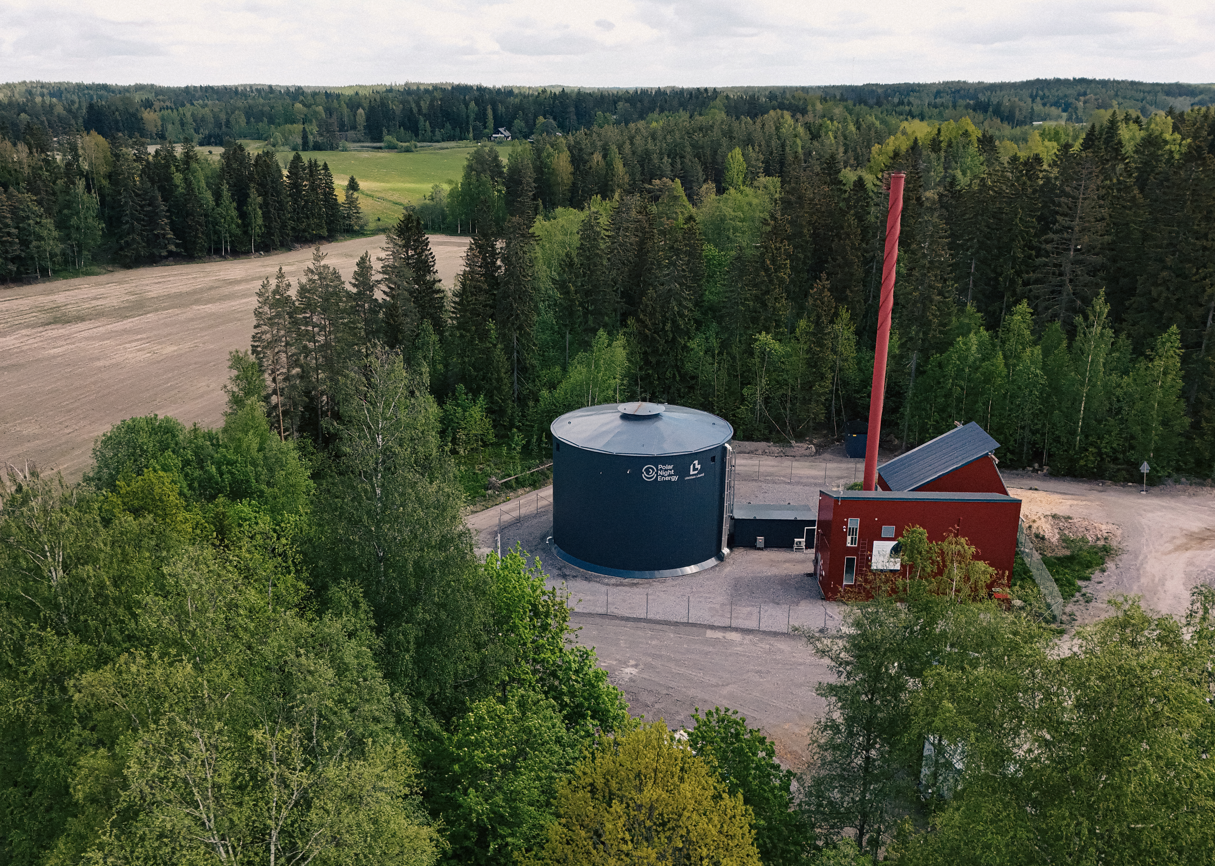The world’s largest sand battery is online and ready to make the most of Finland’s renewable energy. Once fully operational, this giant device is expected to cut carbon-equivalent emissions from the local heating network by about 160 tons each year, slashing the district’s heating emissions by nearly 70 percent.
Towering at 13 meters tall and spanning 15 meters wide (42 by 49 feet), the sand battery was built by Polar Night Energy on behalf of the power company Loviisan Lämpö in the municipality of Pornainen, located in southern Finland, just over an hour’s drive from Helsinki.
The new system is able to deliver 1 megawatt of thermal power and store up to 100 megawatt-hours of energy, making it 10 times bigger than the company’s earlier model launched in Kankaanpää in 2022.
What is a sand battery?
The sand battery is essentially a large tank that’s filled with approximately 2,000 tonnes of crushed soapstone, a metamorphic rock known for its heat absorption capacity.
Excess heat energy from renewable energy is pumped by a system of pipes through the rocky material, where it is held for hours, days, or even weeks. When energy is needed, it can be discharged. It’s released in the form of boiling water, steam, or a blast of heated air, which can be used for industrial applications or water-based heating systems.

A drone’s-eye view of the Pornainen Sand Battery.
Image credit: Polar Night Energy
What’s the point of sand batteries?
By turning excess green energy into storable heat, the sand battery helps to maximize the use of renewables.
The world is increasingly looking towards cleaner energy sources like solar and wind, but they have a major disadvantage in that they only produce energy when the Sun shines or the wind blows. The sand battery helps solve this problem by capturing and storing energy for later use, bridging the gap between when energy is produced and when it’s needed.
“Our goal is to be climate neutral by 2035, and the Sand Battery is a major step toward that,” Mikko Paajanen, CEO of Loviisan Lämpö, said in a statement.
“Combustion is not a sustainable option for the climate or the environment. This project is a powerful example that effective solutions for mitigating climate change do exist,” added Liisa Naskali, Chief Operating Officer of Polar Night Energy.
Even beyond concerns about climate, sand batteries offer power companies a competitive advantage and help keep power grids stable. Its large storage capacity allows the power grid to store surplus energy when demand is low, then release it when demand spikes.
“The Sand Battery investment aligns closely with our sustainability goals. From an investor’s perspective, this technology holds tremendous potential: it can participate in electricity reserve markets, reduce dependency on single energy sources in heat production, and serves as a great example of sector integration between electricity and heat,” said Sauli Antila, Investment Director at CapMan Infra.
Source Link: The World's Largest Sand Battery Was Just Switched On In Finland